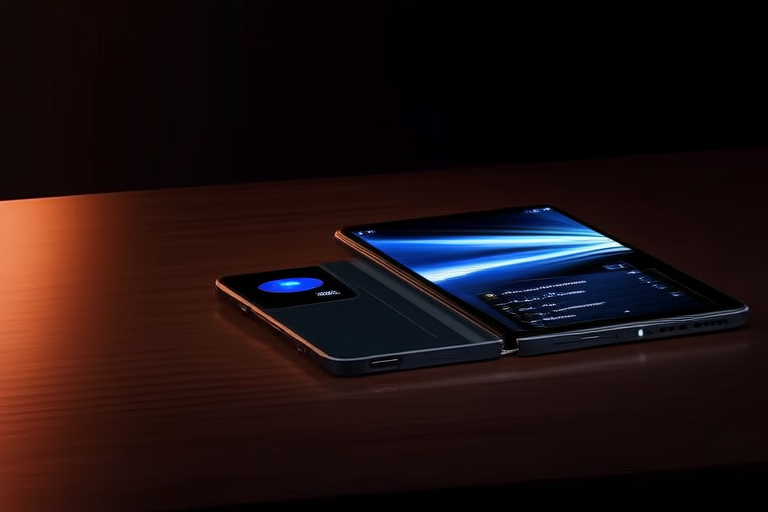The Evolution of Smartphones and Tablets: What’s Next in 2024?
Introduction
Over the past decade, smartphones and tablets have undergone a remarkable transformation, evolving from simple communication tools into indispensable devices that shape nearly every aspect of modern life. These gadgets have become more than just conduits for calls and texts; they are now hubs for entertainment, productivity, health monitoring, and social interaction. The rapid advancements in technology have enabled manufacturers to push the boundaries of what these devices can achieve, integrating cutting-edge hardware, intuitive software, and sleek designs that cater to an increasingly connected world. As we approach 2024, it is worth reflecting on how far these technologies have come and exploring the innovations that may redefine their role in our lives.
Key Milestones in the Evolution of Smartphones and Tablets
Hardware Innovations
The evolution of hardware has been one of the most visible aspects of smartphone and tablet development. Early models featured basic processors and limited memory, but today’s devices boast multi-core chips capable of handling complex tasks with ease. Advances in camera technology have also been transformative, with multiple lenses, computational photography, and AI-driven enhancements enabling users to capture professional-grade images. Display technology has seen similar leaps, transitioning from small, low-resolution screens to vibrant OLED panels offering high refresh rates and true-to-life colors. Battery capacity and charging speeds have improved significantly, ensuring devices can keep up with demanding usage patterns.
Software Advancements
Software has played an equally critical role in shaping the user experience. Operating systems like iOS and Android have matured into robust platforms, offering seamless integration across ecosystems of apps and services. Features such as voice assistants, augmented reality (AR), and machine learning algorithms have redefined how users interact with their devices. Regular updates ensure security and performance improvements while introducing new functionalities. Meanwhile, app stores have democratized access to innovative tools, allowing developers to create solutions tailored to diverse needs.
Design Innovations
Design has evolved to prioritize both aesthetics and functionality. Manufacturers have embraced minimalism, reducing bezels and incorporating edge-to-edge displays to maximize screen real estate. Materials like aluminum, glass, and ceramics have replaced plastic, lending devices a premium feel. Foldable and flexible displays represent a bold step forward, challenging traditional form factors and enabling multitasking capabilities previously unseen in mobile devices. Ergonomics and portability remain central concerns, ensuring that even as devices grow more powerful, they remain comfortable to use.
User Experience Enhancements
At the heart of these technological strides lies a focus on improving the user experience. Touchscreens have become more responsive, gesture-based navigation has simplified interactions, and biometric authentication methods like fingerprint sensors and facial recognition have enhanced security. Accessibility features, such as screen readers and customizable interfaces, have made devices more inclusive. Together, these enhancements have created intuitive, personalized experiences that adapt to individual preferences and lifestyles.
Emerging Trends Shaping Smartphones and Tablets in 2024
Foldable Screens
Foldable screens are poised to become mainstream by 2024, addressing the growing demand for larger displays without compromising portability. These devices offer versatile form factors, allowing users to switch between phone and tablet modes effortlessly. While early iterations faced durability issues, ongoing research into materials like ultra-thin glass and advanced polymers promises to deliver more reliable products. Foldables could revolutionize multitasking, enabling users to run multiple apps simultaneously or enjoy immersive media experiences.
AI Integration
Artificial intelligence will continue to play a pivotal role in enhancing device capabilities. On-device AI will enable faster processing of data, reducing reliance on cloud servers and improving privacy. Applications range from smarter virtual assistants that anticipate user needs to advanced photo editing tools powered by neural networks. AI-driven optimizations will also extend battery life by intelligently managing resource allocation based on usage patterns.
Battery Improvements
Battery technology remains a key area of focus, with researchers exploring alternatives to lithium-ion batteries. Solid-state batteries, which promise higher energy density and faster charging times, are expected to enter the market soon. Wireless charging innovations, including over-the-air charging, could eliminate the need for cables altogether. These developments will address consumer frustrations related to battery longevity and charging convenience.
New Materials
The quest for lighter, stronger, and more sustainable materials is driving experimentation with novel composites and alloys. Graphene, known for its exceptional conductivity and strength, holds promise for future applications in displays and batteries. Recycled materials are also gaining traction, aligning with broader efforts to reduce environmental impact. These advancements will not only improve device performance but also contribute to a more circular economy.
Challenges Facing Manufacturers and Consumers
Sustainability Concerns
As the production and disposal of electronic devices contribute to environmental degradation, sustainability has emerged as a pressing issue. Manufacturers face pressure to adopt eco-friendly practices, from using renewable energy in factories to designing products with recyclability in mind. However, balancing sustainability with cost-effectiveness and performance remains challenging. Consumers, too, must grapple with the ethical implications of frequent upgrades and e-waste generation.
Market Saturation
The smartphone and tablet markets have reached a point of saturation in many regions, making it difficult for companies to achieve significant growth through traditional means. Differentiation has become crucial, prompting brands to invest heavily in niche features and marketing strategies. For consumers, this abundance of choices can lead to decision fatigue, complicating the process of selecting the right device.
Predictions for 2024 and Beyond
Impact on Daily Life
By 2024, smartphones and tablets will likely serve as even more integral components of daily life. Enhanced connectivity, driven by 5G and beyond, will facilitate real-time collaboration and remote work, blurring the lines between personal and professional spaces. Health monitoring features, powered by AI and wearable integrations, will empower individuals to take charge of their well-being. Entertainment will reach new heights, with AR and VR capabilities transforming how people consume content.
Productivity Gains
These devices will continue to redefine productivity, offering tools that streamline workflows and foster creativity. Multitasking on foldable screens, coupled with AI-driven task management, will enable users to accomplish more in less time. Cloud integration and cross-device synchronization will ensure seamless transitions between work environments, whether at home, in the office, or on the go.
Connectivity Advancements
Connectivity will evolve to support an increasingly interconnected world. Smartphones and tablets will act as control centers for smart homes, vehicles, and cities, facilitating communication between IoT devices. Edge computing will complement cloud infrastructure, enabling faster data processing and reduced latency. This hyper-connected ecosystem will enhance convenience and efficiency, though it will also raise questions about data security and privacy.
Conclusion
The journey of smartphones and tablets from rudimentary gadgets to sophisticated companions reflects humanity’s relentless pursuit of innovation. As we look ahead to 2024, the convergence of foldable screens, AI, advanced materials, and sustainable practices promises to usher in a new era of possibilities. While challenges such as market saturation and environmental concerns persist, they also present opportunities for creative solutions. Ultimately, these devices will continue to shape how we live, work, and connect, reinforcing their status as cornerstones of modern society.


